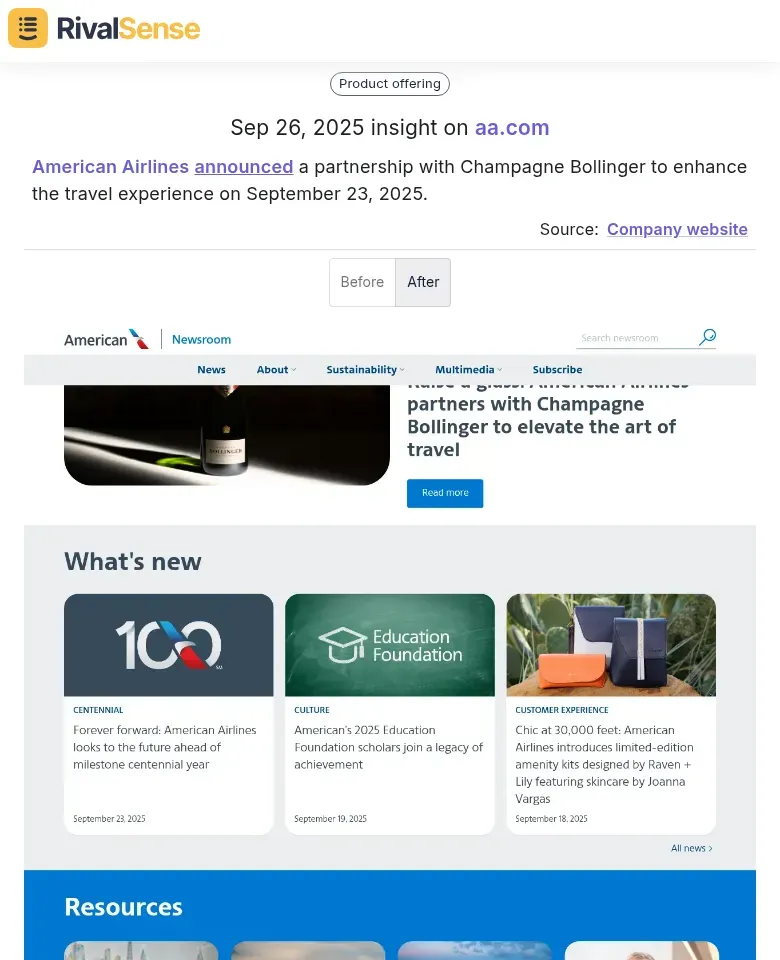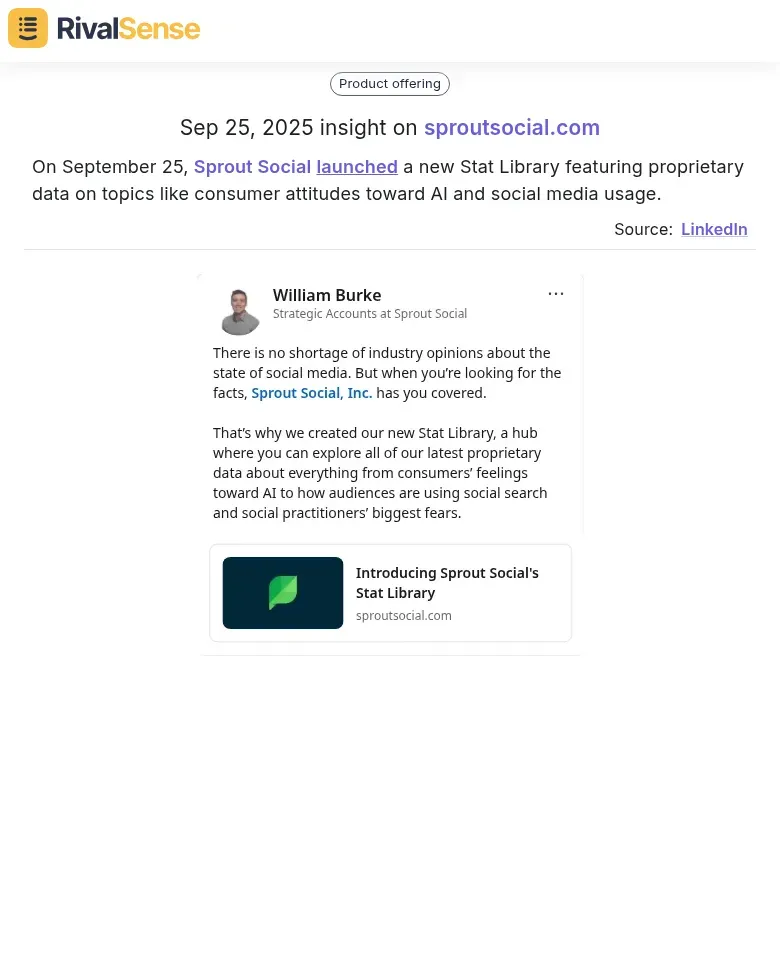4 Quick Hacks to Analyze Competitor Products for Key Account Growth
In the competitive B2B landscape, staying ahead requires a deep understanding of your rivals' moves. Competitor product analysis is a strategic imperative for fueling key account growth, as it uncovers gaps and opportunities in your offerings. For instance, if a competitor's product integrates seamlessly with a popular CRM your key accounts use, you risk churn. By identifying such gaps, you can prioritize developments to better meet client needs, boosting retention and expansion.
Analyzing competitor partnerships is equally crucial. It reveals opportunities to enhance customer value; e.g., if a rival partners with a data analytics firm, consider similar alliances to offer bundled solutions that increase loyalty. Monitoring product launches and updates allows proactive adjustments—like swiftly matching a new AI feature to prevent account defection.
Practical steps: Use tools like RivalSense to track competitor websites and review sites for real-time updates. Create a checklist: list top competitors, note their key features, partnerships, and recent launches monthly. This disciplined approach ensures you stay agile, turning competitive insights into actionable strategies for key account growth.
Hack 1: Leverage Partnership Announcements to Uncover Value-Add Opportunities
Partnership announcements can be strategic goldmines for uncovering how competitors enhance customer value. By monitoring these collaborations, you gain insights into innovative ways to serve your key accounts. For example, RivalSense recently tracked that American Airlines announced a partnership with Champagne Bollinger to enhance the travel experience on September 23, 2025.

This type of insight is valuable because it reveals how competitors are elevating customer experience through exclusive perks, which can inspire similar high-value alliances for your business. Start by monitoring press releases, social media, and industry news for new collaborations. Focus on partnerships that boost customer experience—like exclusive perks (e.g., free trials with complementary tools) or bundled services (e.g., software integrated with consulting). These initiatives often address pain points like cost savings or convenience, inspiring similar moves for your key accounts.
Analyze the strategic fit: Ask why the partnership works. Does it solve a specific customer desire, such as streamlining workflows? For example, if a competitor partners with a data analytics firm to offer insights, it targets clients' need for data-driven decisions. Use this insight to brainstorm co-branded offerings—perhaps teaming up with a security provider to bundle protection services, differentiating your product and strengthening key account loyalty.
🔍 Practical Checklist:
- [ ] Set up alerts for competitor partnerships using tools like RivalSense.
- [ ] Evaluate each partnership's impact on customer satisfaction and retention.
- [ ] Brainstorm with your team on replicable, high-value collaborations.
- [ ] Pilot a co-branded initiative with a trusted partner to test appeal.
Hack 2: Decode Product Integrations and Access Features for Competitive Edge
Product integrations and login features are often overlooked but can significantly impact key account satisfaction. By decoding these elements, you can identify friction points and opportunities to streamline your own offerings. For instance, RivalSense insights show that Delta Air Lines announced on September 26 that starting October 1, passengers can log in to Delta Sync Wi-Fi with their SkyMiles membership to get 14 days free of YouTube Premium.

This type of insight is valuable because it highlights how competitors use login simplifications and perks to enhance user experience, reducing barriers and adding immediate value—key for retaining high-value accounts. To boost key account growth, scrutinize how competitors integrate third-party services. For example, many SaaS tools offer free subscriptions to apps like Slack or Trello, adding value without direct costs—ideal for key account perks. Assess these integrations by signing up for competitor trials; note which services are bundled and how they enhance user workflows.
🤔 Actionable Tips:
- Create a checklist to evaluate integration depth—does it automate tasks or just link superficially?
- Test competitor login flows yourself; time how long it takes to access core features.
- Monitor for timed offers like trials or upgrades using competitive intelligence tools.
- Design your own limited-time benefits, such as exclusive webinars, tailored to key accounts.
Hack 3: Analyze Data and Insights Features to Enhance Account-Specific Strategies
Data-driven features are becoming a cornerstone of competitive advantage in B2B markets. By analyzing how competitors leverage data, you can tailor your strategies to meet the evolving needs of key accounts. RivalSense captured that on September 25, Sprout Social launched a new Stat Library featuring proprietary data on topics like consumer attitudes toward AI and social media usage.

This type of insight is valuable because it demonstrates how competitors use proprietary data to address market trends, enabling you to anticipate shifts and personalize offerings for better account engagement. To drive key account growth, scrutinize your competitors' data libraries and proprietary insights. For example, if a rival like Salesforce publishes reports on consumer attitudes in the B2B space, study these to identify trends—such as a shift towards AI-driven personalization—that can inform personalized strategies for your key accounts.
Evaluate how competitors use data-driven features, such as sentiment analysis tools, to tailor offerings. By analyzing their approaches, you can enhance your own services to be more relevant. For instance, if a competitor's insights reveal that key accounts value real-time data dashboards, integrate similar features to boost engagement.
📊 Proactive Steps:
- [ ] Review competitors' annual reports and whitepapers for emerging trends.
- [ ] Monitor their data features through tools like RivalSense to track updates.
- [ ] Conduct SWOT analysis on their insights to identify gaps you can fill.
- [ ] Survey key accounts to validate trends and adjust strategies accordingly.
Hack 4: Monitor Launch Timing and Rollouts for Strategic Planning
Timing and rollout strategies can make or break your key account initiatives. By observing competitors' schedules, you can avoid clashes and optimize your own launches for maximum impact. For example, if a rival times a major update during a quiet period, you might align your release to capture attention when accounts are most receptive.
Learning from phased launches is equally important; competitors often roll out features gradually to gather feedback and customize for key accounts. Emulate this by releasing features in stages—start with a beta for select accounts, incorporate their input, and refine before full deployment. This builds trust and ensures your product meets specific needs.
⏰ Strategic Checklist:
- [ ] Use tools like RivalSense to set alerts for competitor announcement dates.
- [ ] Identify rollout phases and set feedback milestones for your launches.
- [ ] Analyze update frequency to maintain a competitive pace—aim for quarterly if rivals do.
- [ ] Align updates with key account business cycles, like post-budget periods.
Conclusion: Implementing Quick Hacks for Sustained Key Account Growth
Regular competitor product analysis is not just reactive—it's a proactive driver of innovation and key account loyalty. By embedding these hacks into your routine, you can continuously adapt and stay ahead of market shifts. For instance, translating insights into action might involve developing superior features based on competitor moves, which reinforces account trust and reduces churn.
To make this sustainable, create a quarterly review process where teams brainstorm improvements. Steps include scheduling monthly competitor scans, holding cross-functional workshops, and implementing A/B tests on new features. Ongoing monitoring is crucial; set up alerts for competitor updates to ensure you're always informed.
🚀 Ready to elevate your strategy? Try out RivalSense for free to get automated competitor tracking across product launches, partnerships, and more. Sign up today to receive your first weekly report and start turning insights into key account growth!
📚 Read more
👉 Competitor Analysis in Action: Insights from OpenAI's Recent Activities
👉 Mastering Competitor Pricing Models: A Strategic Guide for B2B Leaders
👉 5 Key Account Management Mistakes Influencer Platforms Must Avoid
👉 How XTX's TernFS Open Source Move Revealed ML Strategy Gaps
👉 Advanced API Tactics for Key Account Competitor Intelligence
